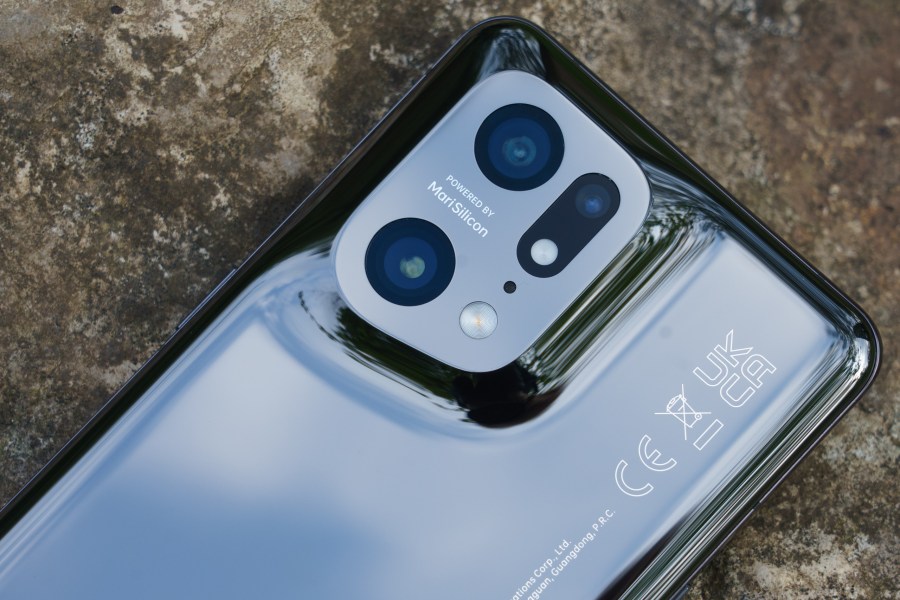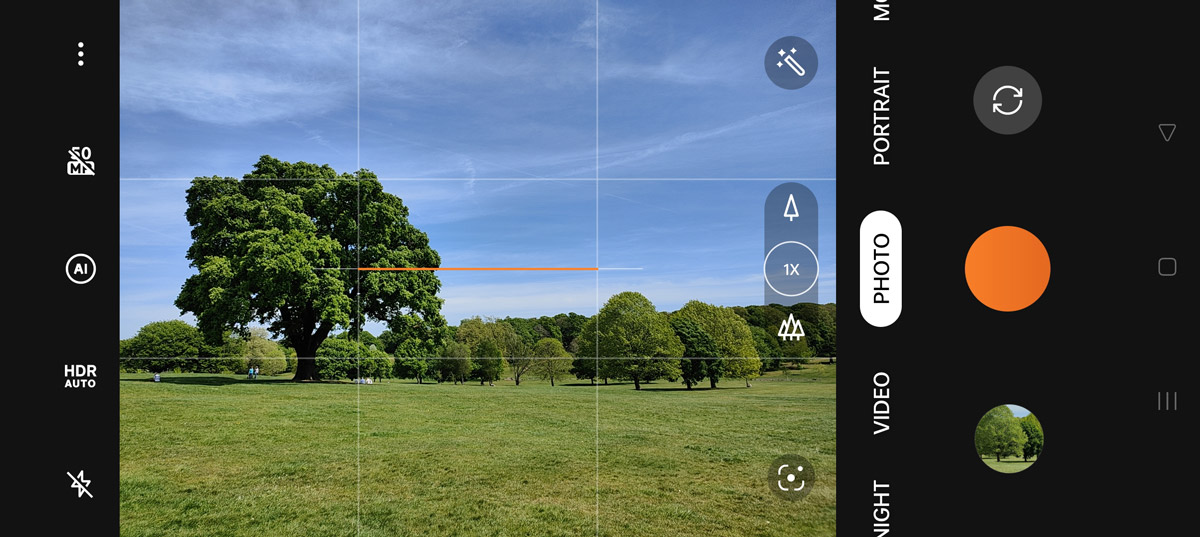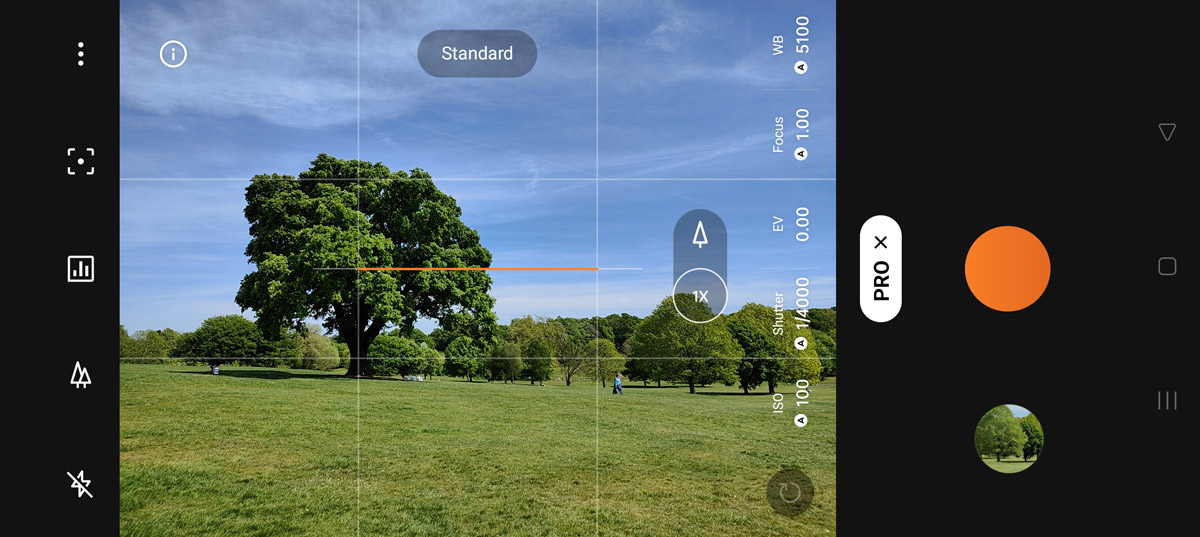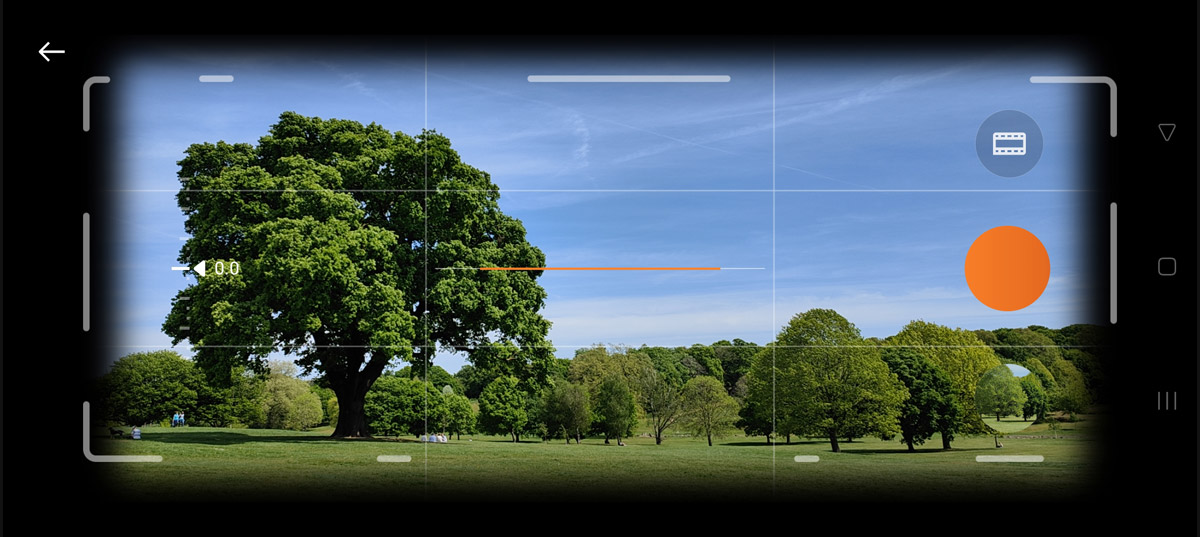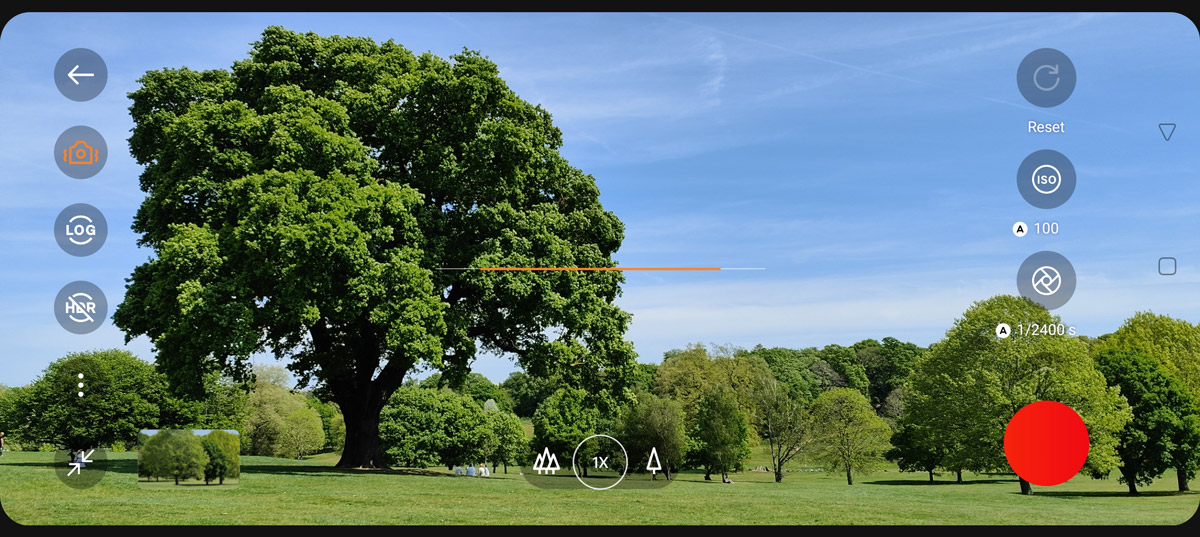OPPO Find X5 Pro at a glance:
- £1,049
- Android smartphone
- 6.7in screen
- 256GB storage
- Triple camera system
- 12MP standard output
- 4K 60p video
- www.oppo.com/uk
In February 2022, Chinese smartphone maker Oppo announced it had entered into a partnership with the legendary Swedish camera maker Hasselblad, to collaborate on making smartphones. The Find X5 Pro represents the first fruits of this co-operation, with this flagship device proudly emblazoned with the Hasselblad logo right beside its Oppo badge.
Its triple camera system, which comprises ultra-wide, wide, and telephoto lenses, is said to have been co-developed by the two companies. But does this bring any obvious benefits?
OPPO Find X5 Pro: Features and design
In many respects, the Oppo Find X5 looks like a typical flagship smartphone of 2022. Measuring 164 x 74 mm, its front face is almost entirely covered by the 6.7in AMOLED screen, with just a ‘hole punch’ cut-out for the selfie camera. With QHD+ (3216×1440) resolution at 525ppi, 10-bit colour, a refresh rate up to 120fps and a peak brightness of 800 nits, the screen is bright, detailed and colourful, and provides a smooth user experience.

The OPPO Find X5 Pro’s screen covers almost the entire front, with just a cut-out for the selfie camera
It’s covered in Corning Gorilla Glass Victus, promising resistance against scratches and drops of up to 2m. As we’d expect at this price, the device also boasts IP68 dust and water resistance, which means that it should survive being immersed in shallow water for 30 minutes.
One area where the Find X5 Pro does stand out lies with its design. On the back, a bulge at the top left corner accommodates the main camera system, adding about 3mm extra to the specified 8.5mm thickness. But the three lenses and the small LED flash are enclosed in a smooth, beautifully sculpted housing that gives a real impression of premium design. It’s also comfortable in your hand and subtly encourages your fingers to steer clear of the lenses.
The back cover is super-smooth, in fact it’s arguably too smooth. The device is disconcertingly prone to sliding off any surface that’s not perfectly flat, and I’d advise fitting the protective case that comes in the box.
The power button is conventionally placed on the right-hand side, but unlike most Android phones, the volume control buttons are found on the left. Double-clicking either of these can activate the camera app when the phone is in standby, and they can subsequently be used to take pictures, too.
At the base of the device, you’ll find the SIM tray and the USB-C port, which like on most Android flagships these days, is the sole external connector.
Inside, there’s the latest 8-core Qualcomm SnapDragon 8 Gen 1 processor, which boasts an integrated Adreno 730 GPU. The 5000mAh battery should provide enough power for even an intensive day’s use. Oppo includes a hefty 80W rapid charger and USB-C cable in the box, which is becoming increasingly uncommon.
OPPO Find X5 Pro: Camera system
Turning our attention to the camera system, Oppo has used a similar setup to last year’s Find X3 Pro, but has dropped its gimmicky ‘microscope camera’. The main camera offers a 26mm equivalent view, f/1.7 aperture and optical stabilisation. It’s joined by a 15mm equivalent f/2.2 ultra-wide camera and a ‘telephoto’ camera that combines a 46mm equivalent view with an f/2.4 aperture.

The main camera offers a moderately wideangle view. Oppo Find X5 Pro, 26mm equivalent, 1/2000sec at f/1.7, ISO 110
Most photographers would consider the latter a ‘normal’ lens, rather than a telephoto; in other words, it provides a very natural perspective, but doesn’t offer anywhere near the reach offered by other devices. Neither the ultra-wide nor the telephoto lenses are optically stabilised, but as we’d expect, all the cameras include autofocus.

The ultra-wide camera captures a considerably more expansive vista. OPPO Find X5 Pro, 15mm equivalent, 1/2000sec at f/2.2, ISO 194
Both the main and ultra-wide cameras use 50MP Sony IMX766 sensors that measure approximately 8.2 x 6.1mm, which is about half the area of the 1-inch sensors used in many enthusiast compact cameras. Some smartphones, such as the Samsung Galaxy S22 Ultra, use a larger sensor for the main camera. But the flipside is that most use a smaller sensor in the ultra-wide camera, including the OnePlus 10 Pro (which also bears the Hasselblad name). Meanwhile, the telephoto camera uses a 13MP sensor that’s about a quarter of the area.

The telephoto camera lets you zoom into a scene slightly. Oppo Find X5 Pro, 1/1290sec at f/2.4, ISO 99
All three cameras give a standard output size of 12MP, but you can also get native 50MP images from the main and ultra-wide cameras. On the front, there’s a fixed-focus selfie camera that creates pointlessly oversized 32MP images.

Double-clicking either of the volume keys on the left will fire up the camera when the device is in standby. The power button is on the other side
For image processing, the camera system employs Oppo’s MariSilicon X Neural Processing Unit (NPU). The firm makes grand claims that this is a ‘breakthrough for night videography’, promising wide dynamic range and accurate colours. It also brings the option to use AI-based image processing with still photos, which usually translates to bumping up the saturation a bit.
OPPO Find X5 Pro: Camera app
Oppo has used a conventional-looking Android camera app, with an equally familiar set of options. Most users will likely gravitate to the fully automatic Photo mode. Here, you can select easily between the three lenses by tapping icons overlaid on the display, and there are touch buttons to enable HDR, AI image enhancement, and the 50MP mode.
There’s also a selection of image-processing filters, with names like ‘Delight’, ‘Crystal’ and ‘Candy’. You’ll also find three ‘Hasselblad Master’ options in this set, but despite the promise of the branding, I can’t say I liked them much.
Switch to Pro mode and you get manual control over shutter speed, ISO, exposure compensation, focus and white balance. An exposure histogram and focus peaking display are available, too.
Slightly confusingly, in the Pro mode you switch lenses using a different touch button, at the top or left of the screen. There’s still a zoom control in the same place as on the Photo mode, but it now applies digital zoom. You can record images in DNG raw format, and there’s also a ‘Raw Plus’ option which records additional multi-shot computational data, in principle giving extended dynamic range.
Specialist modes include Night, Portrait, Panorama and Long Exposure, with the latter including settings for light painting, traffic trails, and moving water. You also get an ‘XPan’ mode, which notionally tries to simulate the experience of using Hasselblad’s legendary 35mm panoramic rangefinder camera. Except in reality, it just ends up shooting a wide, thin crop from the main camera and upsizing it to a blurry mess. Unlike the real XPan, you can’t even change lenses.
For video, you likewise get a choice of Auto and advanced modes. The latter is called Film, and adds more advanced settings such as HDR recording and a Log mode for colour grading in post-processing. It’s possible to record 4K video at 60fps, or Full HD at up to 240fps for slow-motion effects. The selfie camera makes do with Full HD 30fps only.
OPPO Find X5 Pro: Image quality
On the whole, the Oppo Find X5 Pro delivers really nice images that look great when viewed on its own screen. Unsurprisingly, though, the image processing is optimised for this type of viewing experience. If you stare at the images at 100% on a conventional computer monitor with much lower pixel density, they’ll look heavily processed and over-sharpened.

The main camera gives attractive images with good detail. OPPO Find X5 Pro, 26mm equiv, 1/1900sec at f/1.7, ISO 1900
Unusually, the ultra-wide camera is every bit as good as the main one, with both lenses recording plenty of detail from corner to corner. The telephoto camera is also very good in bright light, but the smaller sensor and narrower aperture means that detail is lost more quickly to noise reduction when light levels drop.

The ultra-wide lens also records plenty of detail. OPPO Find X5 Pro, 15mm equiv, 1/2000sec at f/2.2, ISO 106
Switch the main or ultra-wide camera output to 50MP output, and you’ll find that this can deliver extra detail in good light, although probably not as much as you’d hope. It’s nowhere close in quality to a high-resolution DSLR or mirrorless camera, so while it’s a nice option to have available, I don’t think I’d use it very much.

In good light, the telephoto camera delivers very creditable results. OPPO Find X5 Pro, 46mm equivalent, 1/1000sec at f/2.4, ISO 100
Colours are bright and saturated, while the auto white balance generally does a good job of delivering natural-looking images with no ugly colour casts. However, the high dynamic-range processing can be a bit hit-and-miss. For example, it can work brilliantly in adding colour and detail into a bright sky that would normally be over-exposed to pure white. But on the other hand, it can leave other images looking flat and unnatural. As a result, it pays to experiment with turning it on and off in high-contrast situations.

Here, the HDR processing has given a somewhat unnatural, flat-looking result. OPPO Find X5 Pro, 26mm equiv, 1/1250sec at f/1.7, ISO 403
The wide camera is touted as doing double-duty for macro, simply because it focuses the closest of the three. But experienced photographers won’t be surprised to learn that the most effective close-up images will usually come from longer zoom settings. Aside from anything else, if you get in so close, you’ll often just block your own light. If you try to shoot close-ups with the telephoto camera, though, the device will auto-switch to using the main camera with digital zoom. The results are still OK, at least for social media use.

Close-up shots can give decent results, but they tend to lack fine detail. Oppo Find X5 Pro, 35mm equivalent, 1/400sec at f/1.7, ISO 402
Low-light images are impressive, with the MariSilicon NPU doing a good job of retaining colour and detail. In fact, I rarely saw any need to engage the specialist Night mode, as the regular Photo mode does perfectly well on its own.

The camera does a really good job in low light. OPPO Find X5 Pro, 26mm equiv, 1/20sec at f/1.7, ISO 4169
I was also really impressed by the Panorama mode, which records loads of detail with no visible stitching artefacts. It’s vastly better than Samsung’s version, for example.
Portrait mode does a good job of detecting a subject and blurring away backgrounds, and you can adjust the strength of the effect using a virtual aperture slider. As always, though, the cut-out around fine detail such as hair looks unnatural if you examine the images closely.

In portrait mode, the OPPO Find X5 Pro does a good job of blurring away backgrounds without looking too artificial. OPPO Find X5 Pro, 46mm equivalent, 1/640sec at f/2.4, ISO 99. f/4.5 aperture simulation
The mode doesn’t just work on humans, but can also deliver convincing results with other subjects. Unlike a real large-aperture lens, though, it gets things all wrong with complex and finely detailed subjects like flowers. Other times the visual effect can veer towards ‘fake miniature’ territory, although even then, the results can be interesting.
Video quality is very creditable too, with lots of detail and clear sound, too. The stabilisation does a great job of keeping footage watchable when you’re walking with the camera or simply panning across a scene.
But I was most impressed by the low-light performance, and the way the camera is capable of rendering a full range of brightness and colour even under streetlights at night. It’s not magic – if there’s not enough light for you to see anything, it won’t either – but I haven’t seen another smartphone capable of this kind of low-light video quality.
OPPO Find X5 Pro: Value for Money
At £1049, the Oppo Find X5 Pro costs the same as the Apple iPhone 13 Pro when bought with the same 256GB memory capacity. This makes it considerably more affordable than the Samsung Galaxy S22 Ultra, which costs £1249 for 256GB, but in return boasts a four-camera system with two telephoto lenses that provide considerably greater optical zoom. Compared to the Google Pixel 6 Pro, the Find X5 Pro costs £100 more but has a distinctly more stylish look. On the whole, it’s a competitive price given its feature set and design.
OPPO Find X5 Pro: Our Verdict
In the Find X5 Pro, Oppo has produced a fine Android flagship that looks fabulous, performs well, and takes great pictures and video. As such, it strikes an enticing middle ground between the highly competent, but plainly styled Google Pixel 6 Pro, and the Samsung Galaxy S22 Ultra, which is class-leading in terms of lens range and features, but painfully priced.
One thing I really appreciated is the balance Oppo has struck between the three cameras. While other firms have been known to concentrate their efforts on cramming marketing-friendly specs onto the main camera alone, Oppo has included an ultra-wide camera that’s every bit as good, while also delivering very creditable quality from the telephoto. But the latter lens is also this camera system’s main weakness, as it offers nowhere near as much reach as those on competing devices.
Ultimately, the Oppo Find X5 Pro isn’t the cheapest flagship smartphone available, nor is it the best featured. But it’s still a very impressive performer with a well-balanced spec. For Android users looking to acquire a high-performance smartphone camera, it should certainly be on the shortlist.

OPPO Find X5 Pro: Key specifications


